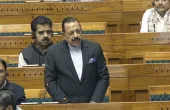
Eight reforms India should focus on to boost renewable installation
The state should improve its policies to attract more developers.
Whilst India has set its target to achieve 500 gigawatts (GW) of renewable energy capacity by 2030, there are still some problems that it might face that may hinder it from tripling its clean energy installation and impeding investment inflow.
To address this, Vibhuti Garg, director, South Asia, at the Institute for Energy Economics and Financial Analysis, listed eight reforms India should consider.
One of Garg’s recommendations is reducing the price gap between domestic and imported modules and increasing the nameplate capacity by relaxing the Approved List of Models and Manufacturers enforcement in solar modules for open access projects and rooftop solar projects. She is also urging India to lower the Goods and Service Tax levied on hydropower project components to 12% from the current 18%-28%.
The expert also recommended regulatory reforms such as extending the full exemption in Inter-State Transmission System until 2030 for all segments of renewable energy, including offshore wind.
“The Pradhan Mantri Kisan Urja Suraksha evam Utthaan Mahabhiyan (PM-KUSUM) scheme should be customised to fit the local context and energy-water-agriculture nexus. States where KUSUM has underperformed must offer enhanced financial support to the farmers, such as increased subsidy rates, reduced interest rates, extended repayment periods, maintenance support, etc.,” Garg said.
“For solar rooftops, ensuring a suitable feed-in tariff for surplus units post-settlement is necessary,” she added.
Garg said the national government should have a five-year lock-in period before they can be extensively modified to ensure clarity. She also called for market reforms, such as strictly adopting the time-of-day tariff for commercial and industrial consumers from 2025 and extending it to residential consumers from 2026, as well as financing reforms, such as an InvIT or an aggregated bond to unlock the developers’ capital.
India should also put emphasis on its research and development to increase competitiveness of its domestic players, she said.



















 Advertise
Advertise






